The AGP When Any Airfield Would Do
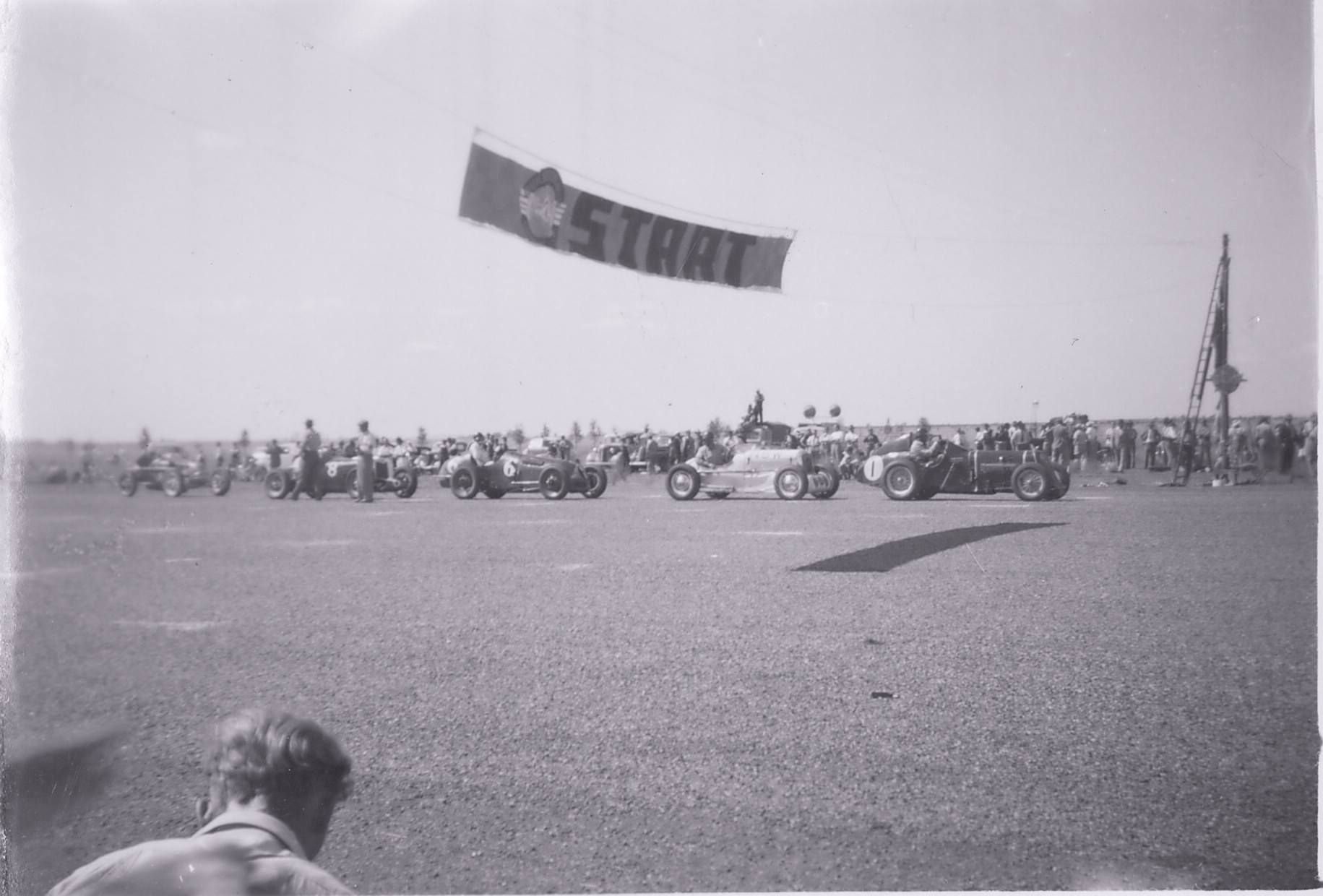
After World War II, Australia was mad keen on motorsport, and airfields were the perfect outlet.
It’s one of our favourite subjects here on The Race Torque, with venues such as Fishermans Bend and Mallala, among many similar, popular facilities that developed from the period.
When Queensland was selected to host the 1949 Australian Grand Prix, the local Queensland Motor Sporting Club (QMSC) was keen as mustard, but there was one catch – they needed a venue.
HEADER IMAGE: Historic Leyburn Sprints
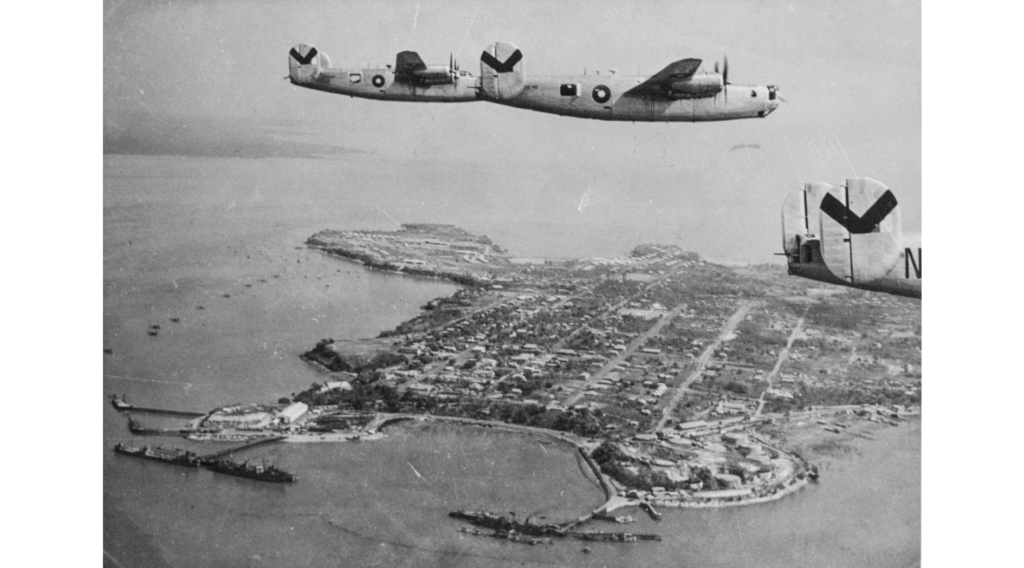
B-24 Liberator Bombers, as pictured above Darwin, called Leyburn home.
After the war
Following Lobethal’s epic Australian Grand Prix at the start of 1939, the outbreak of war later in the year curtailed any thoughts of follow-up events.
By 1947, despite the odds, continued rationing and police opposition, Mount Panorama Bathurst played host to the return of the AGP.
With a rotation policy now in play for the event, the 1948 race fell upon Victoria, however, finding a suitable venue wasn’t an easy task.
The Mornington Peninsula was suggested, ditto Benalla, but the event was ultimately staged at the RAAF Base Point Cook, the birthplace of our Air Force, and the oldest continually operational military airfield on the planet, which continues to this day.
That venue, however, was only ever used by motorsport once.
Next up on the agenda was Queensland, and like Victoria, it struggled to find a track capable of hosting a national event.
As previously reported on these pages, the Strathpine Circuit to the north of Brisbane started hosting motorsport in 1946.
Simplicity was at the heart of the layout, it was a basic up-and-back affair looping around barrels, while later, a deviation out into the scrub at one end mixed things up, although hardly to the standard required to host a major event.
Additionally, some locals nearby to the ex-landing strip were not keen on their Sunday church services being interrupted by the commotion of competition engines.
Thus, the search was on, with other military airfields the ideal solution.
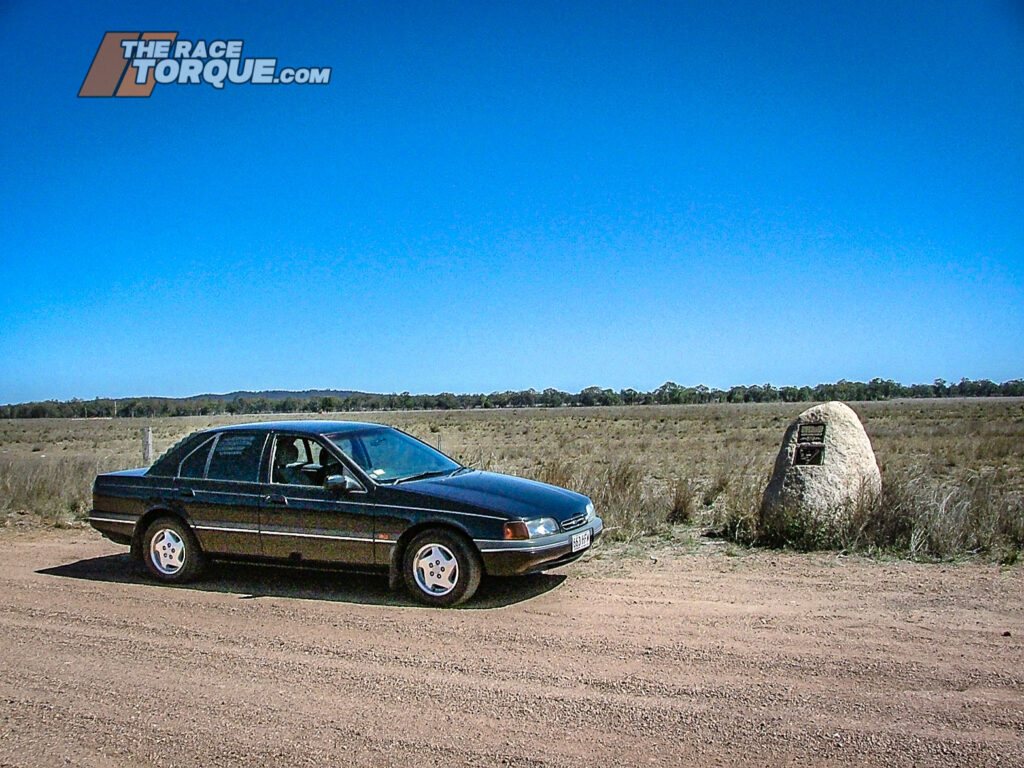
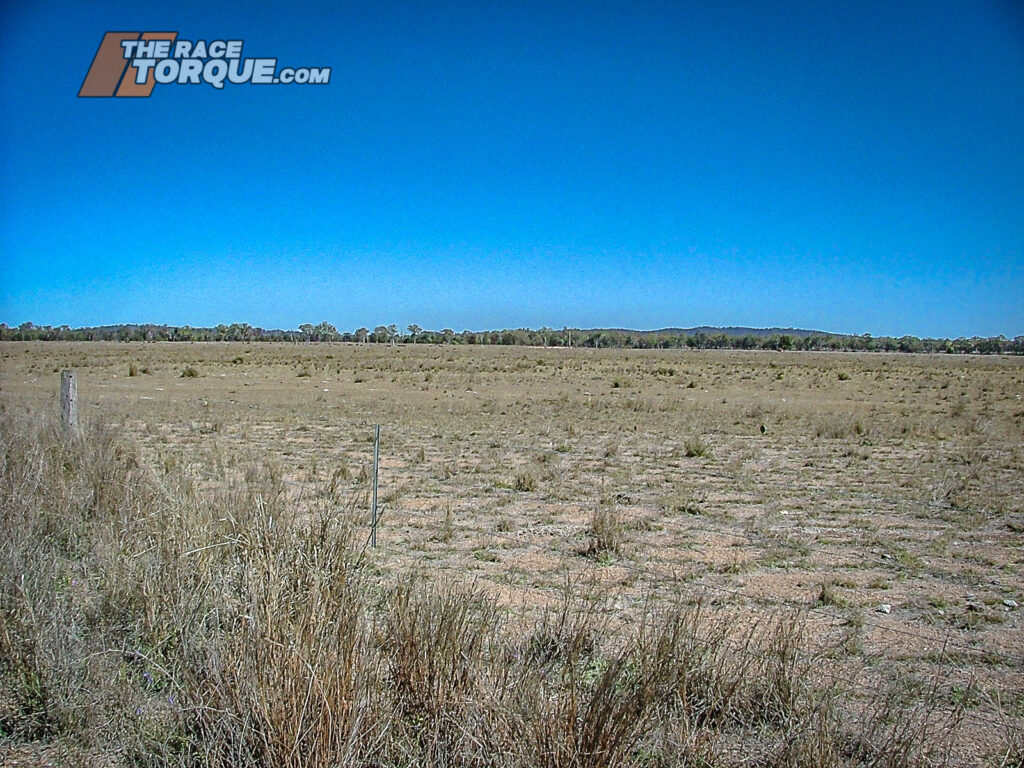
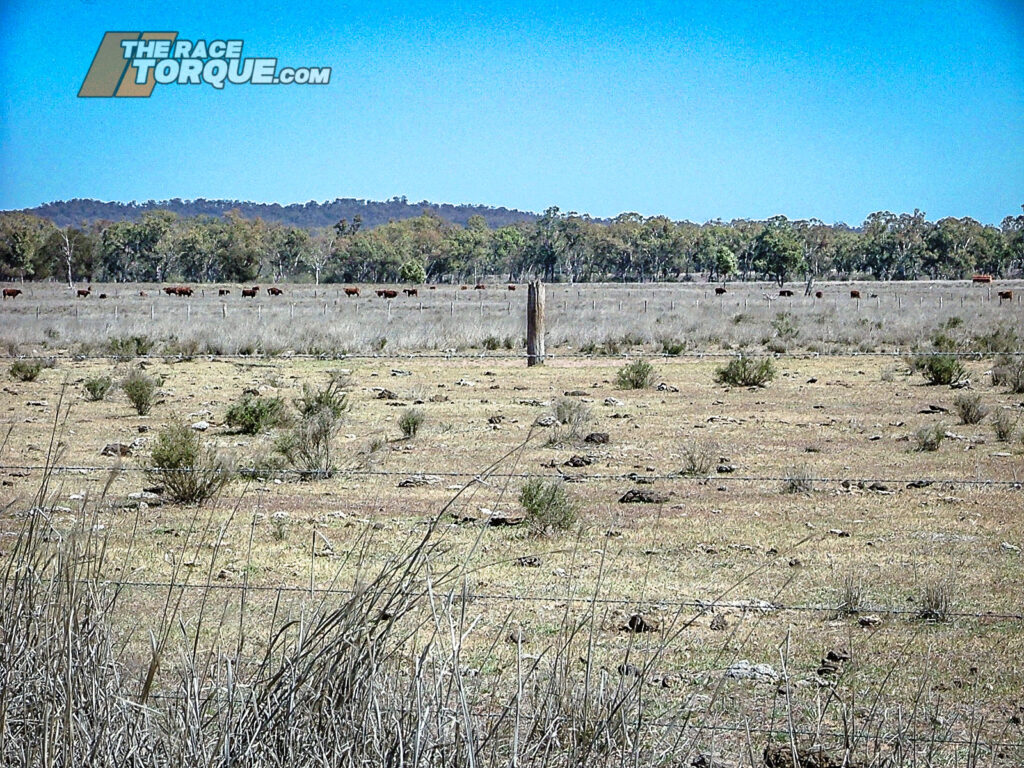
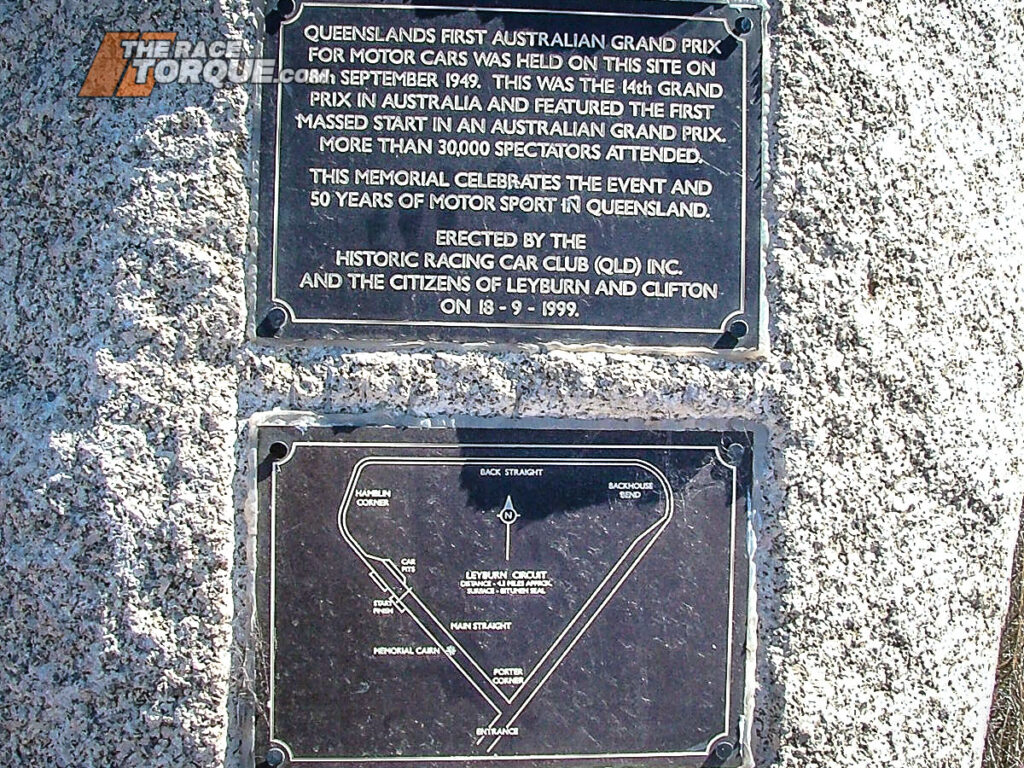
The scene from the old Leyburn airfield in around 2004/’05, which has a monument in place.
Casting a wide net
The QMSC lacked resources, manpower, and a venue.
However, with the knowledge that the operable Point Cook Base had played host to the previous AGP, the club sought to work with the RAAF on a northern solution.
Subsequently, Amberley was identified, however, the knockback on that front came with another option: the former Air Training Station at nearby Lowood.
With a successful state championship meet held at the venue, located roughly halfway between Brisbane and Toowoomba, the stage was set.
However, like Strathpine, it is said that a band of religious local farmers objected to the noisy activity, and the venue’s custodians, the Air Ministry, knocked the AGP on its head.
Through to 1952, a handful of meets were contested at Lowood, but it took until 1956 when the Queensland Racing Driver’s Club purchased the venue from the government, that the track then ran successfully for a decade until activity at Lakeside really took off.
With no venue and 20 weeks until the GP, motorsport needed another option.
Possibilities were canvassed at Goolman, a small emergency landing strip near Amberley, the single runway Brymaroo, north-west of Toowoomba (which is still used for military helicopters today), and the intersecting runways of Cecil Plains, 80km west of Toowoomba, however, none of them were suitable.
The only potential venue that ticked all of the boxes was Leyburn.
Designed to accommodate the USAAF’s heavy US bombers of the day in the event of an attack on Brisbane, the base featured a pair of perpendicular runways connected by a long taxiway, which laid out four corners in the formation of a truncated triangle.
Approved in May 1942, the airfield was completed in April the next year at a cost of £1,500,000, with its two runways the only sealed options to be found in the Darling Downs through to 1945.
Ultimately, the airfield would be home to multiple RAAF squadrons and their B24-Liberators, while in the closing days of the War, it also featured a parachute training unit.
Sound surface, 6.92km long, 45m wide on the runways, and 15m wide at its narrowest, all ticks, with the biggest tick of all coming from its owners, a group of local farmers who were in the end happy to hand over their properties for a day, and for their efforts, each had a corner named after them: Porter, Backhouse and Hamblin.
The rural setting also meant that the sound generated by the meet wouldn’t upset anyone.
Sheep pens had been built onto a part of the runway at the end of the second straight, although this didn’t prove to be a major obstacle.
Seemingly to make the track complete, the property fences had to be removed from the racing surface on both the main and back straights.
The layout was quick, with speeds at the end of the longest 2.1km straight estimated to top out at better than 220km/h, with articles at the time comparing the layout to Silverstone in the UK.
Also quick are the locals, who to this day will swiftly correct you if you call the township anything other than “Leeburn”…
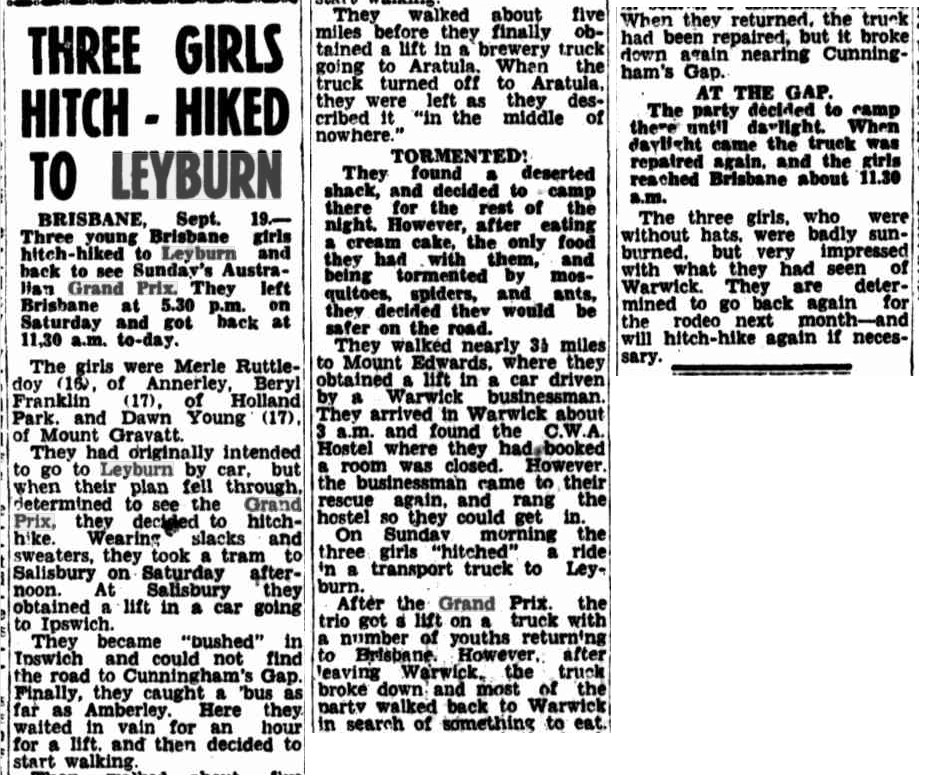
Huge commitment: spectators went to amazing lengths to see car racing in 1949… Source: National Library of Australia.
A wild adventure
These days, Leyburn is a 2.5 hour/200km journey from Brisbane via Toowoomba or Cunningham’s Gap, the main mountain pass between Brisbane and the Darling Downs, however, in the 1940s, it would have been an incredible adventure to find the tiny township.
To place the event in time, Cunningham’s Gap was only sealed between May and September of 1949.
On the day before the race, the Brisbane Telegraph reported that the RACQ had been inundated with requests for maps and route directions to Leyburn, with their offices in Brisbane and Toowoomba handing out specially prepared strip maps.
On the eve of the race, Police commissioner Mr J. Smith stated in the Courier Mail: “I ask motorists to curb excessive speeding, and keep strictly in the line of moving traffic to ensure there no head-on collisions.”
However, the Warwick Daily News reported on the 25th of October that motorcyclist James Gustav Martin, from Brisbane, was fined £10 for travelling at an average speed of between 52 and 54 miles per hour en route to the event in heavy traffic.
On race day, local garages shut early to conserve their fuel supplies for their regular patrons, while traffic jams continued long into the night, with the snarl travelling at 5mph for several miles leaving the track, with one report having race fans still commuting home at 11pm post-event.
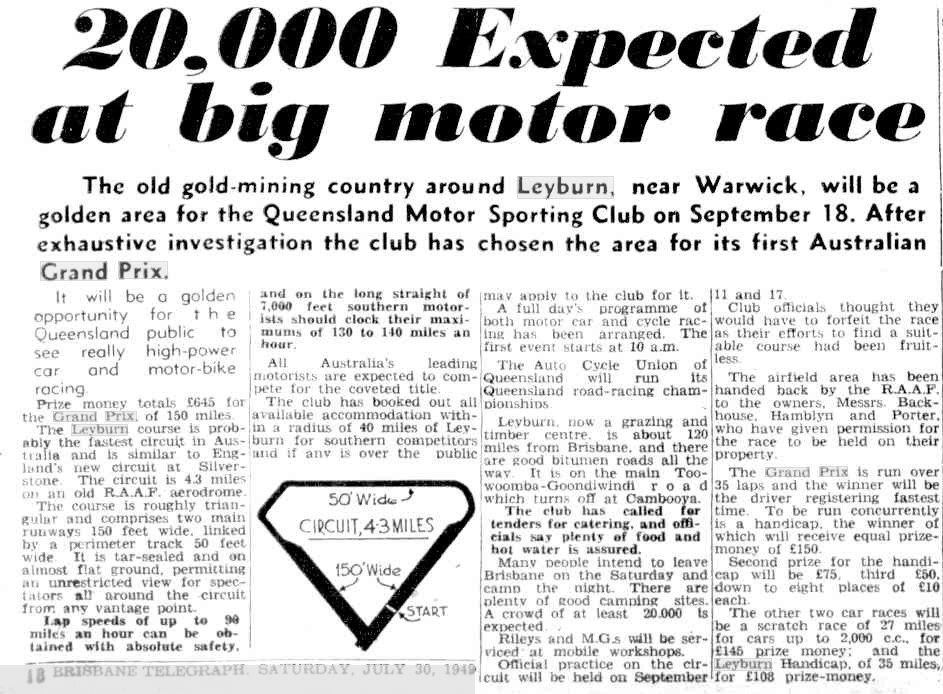
Promotion for the race kicked off early, with the above appearing in the Brisbane Telegraph on July 30th. Source: National Library of Australia.
Business time
Official practice was held on the 11th and 17th of September 1949, a week out from the event and on the Saturday prior to race day, with around 1,000 spectators in attendance for the final preliminaries
It was noted in the Sunday Mail that a Moth aeroplane landed on the track during a lull in practice proceedings, with police noting down the names of the two occupants.
Throughout the leadup, the publicity machine of the day swept the local communities into a frenzy.
The QMSC had planned for a crowd of 7,000 and hoped for 20,000, but when punters started streaming through the gates at 2am on race day, several issues quickly became apparent, including how to control the crowd, how to feed the masses, and where to store all of the gate takings, as the ticket seller’s bags quickly overflowed.
The general consensus is that 30,000 people fronted, with some outlandish estimates having the figure closer to 50,000.
In December following the event, the Brisbane Telegraph reported that gross takings for the meet were £5,047 ($300,000 in 2022), with expenses including £1,000 ($59,000) for entertainment tax, the prize fund of over £1,000, advertising, insurance, police, ambulance and other expenses totalling £700 ($41,500).
With adult entry 5 shillings ($14.85), and when taking children into consideration, that would translate into well over 20,000 paying people through the gate.
Whatever the actual number, it was an immense turn out to a barebones facility a long way from home – the first line of defence around the perimeter of the circuit turned out to be a staunch wall of spectators, with the four-deep crush of punters delaying the day’s start.
Despite the efforts of police with loudspeakers and Frank Kleinig cutting a lap to spray the masses with stones, the fans wanted to be close to the action.
Ultimately, the delays forced the early finish of the last scheduled race against the rapidly setting sun.
PA announcements also rang out during the day in an attempt to locate parents of lost toddlers who had wandered off.
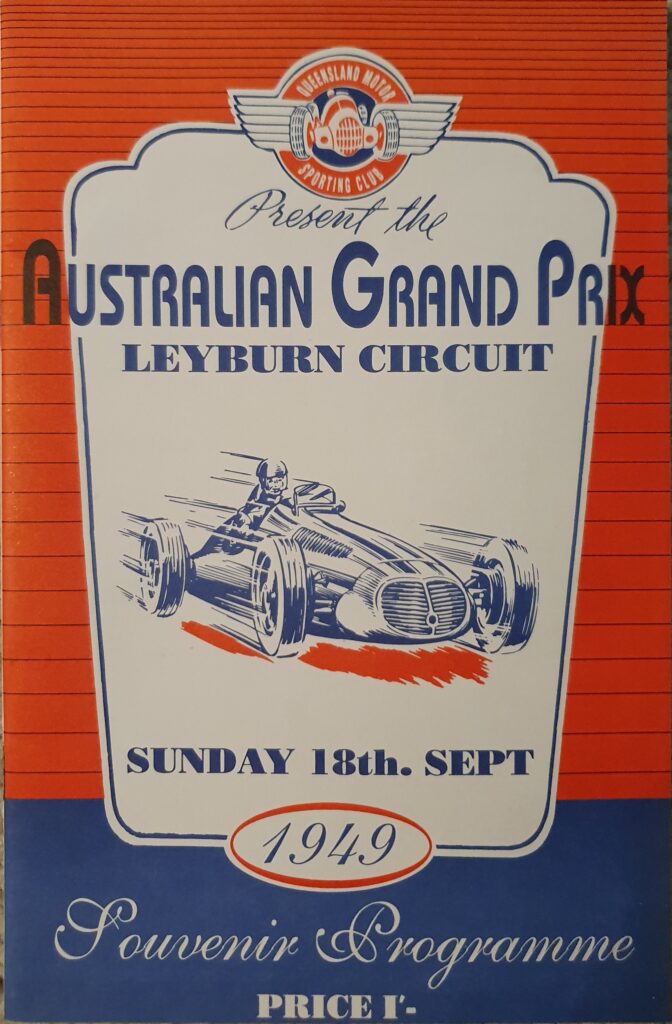
The Warwick RSL Diggers provided the catering for the event, which was prepared from 600 gallons of milk, four water trucks and 20 trucks for haulage of the goods, but they quickly sold out through their seven outlets.
Bag lunches were available for only 1/6 ($4.45 today) or with tea for 2/- ($5.93), consisting of “Hygienically made hot pies made on the grounds to ensure freshness, crisp bread rolls freshly buttered with filling and excellent quality fruit cake.”
Other treats included hot dogs, hot water, ice cream, cups of tea, soft drink, ice-cold pasteurised milk, fruit, sweets, peanuts and cigarettes, all at normal prices.
Ultimately, the Warwick Daily News reported that the catering endeavours provided the RSL with a £658 ($39,000 now) profit.
Pre-race entertainment included a trio of Mustangs flying by in formation, then performing aerobatic stunts, while seven planes landed on the track earlier in the day to ferry in high-flying spectators.
There was also a selection of support races, with the program for the day consisting of six events, with a 2+4 mix:
10:00am – Clubman’s Handicap, machines of all capacities – 4 laps
10:30am – Formula B Scratch race – 6 laps
11:15am – Queensland Junior Road Racing Championship – 6 laps
11:45am – Lunch
12:30pm – Australian Grand Prix – 35 laps (150miles/240km)
3:00pm – Queensland Senior Road Racing Championship, machines all capacities – 6 laps
3:30pm – Leyburn Handicap – 8 laps
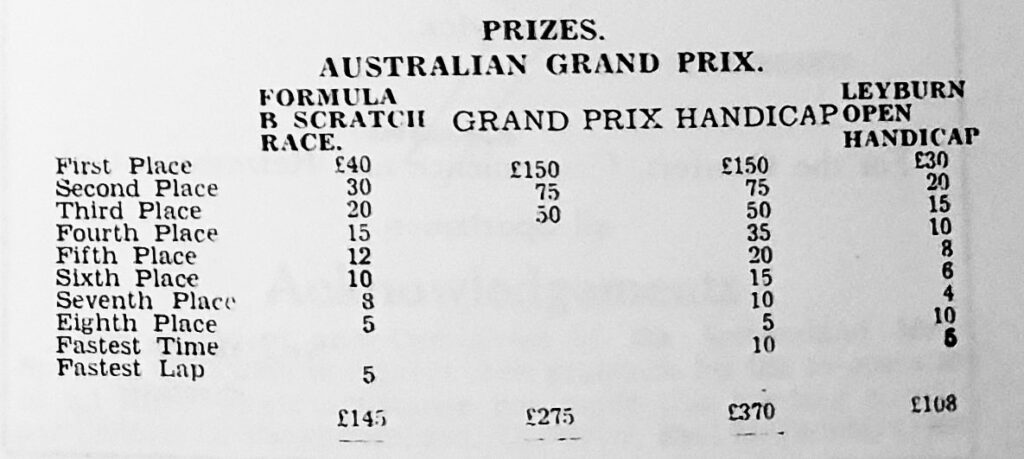
An outline of the prize money offer, as per the official race program.
Footage from race day, September 18th, 1949.
“In true continental style”, the race featured a massed grid race start, with the fastest to the front, rather than a handicap, which had previously been the vogue for the AGP. Saying that, a handicap formula ran concurrently during the race with separate awards provided after the chequered flag.
Simply getting to the Grand Prix was a significant hurdle for many interstate visitors, with post-war rationing still in full swing.
The Courier Mail outlined some of the costs that competitors faced, including £50 ($3,000 today) for transporting their machines from interstate, race prep coming in at around £100 ($6,000) a car, with tyre wear and high-octane fuel also considerable expenses.
While the bulk of the fancied Victorian entries failed to materialise, there was still a staunch field of 28 front the starter on race day.
While Kleinig was the pre-event favourite, he headed to the pits early with a misfire, ultimately retiring due to overheating after 21 circuits.
He wasn’t alone, the tough track and conditions took their toll on machinery, with 17 of the starters failing to see the chequered flag through a variety of mechanical issues.
In the end, John Crouch was victorious in his Delahaye, over Ray Gordon (MG TC) and Arthur Rizzo (Riley Special), with Crouch and Klenig sharing the fastest race lap at 2min 52sec, at an average speed of 144.8km/h.
Notably, despite the gravelly nature of the track, there were no major incidents of note during the day.
The faint outline of the track remains today – although the only section that is still accessible to public traffic is along Liberator Place, which was the straight that connected Porter Corner (turn one) and the sweeping Backhouse Bend (turn two). You can also make out the top two corners, known as Hamblin Turn, plus the main straight, with these areas slowly being overgrown. The monument, depicted above, can be found on Macquarie Drive, at its intersection with the old main straight.
Life after the Grand Prix
After Leyburn, the AGP toured the country, with public road courses coming into vogue at venues including Nuriootpa (SA), Narrogin (WA), Bathurst (NSW) and Albert Park (VIC), which were taken in before a wild street course at Southport on the Gold Coast hosted Queensland’s second event in 1953.
The Grand Prix would also travel north in 1966 and ’69 to Lakeside, and to Surfers Paradise International in 1975.
Back at Leyburn, with Queensland venues still at a premium following the first local AGP, some low-key local meets organised by the Toowoomba Auto Club (TAC) were held at the facility until things properly ramped up at Lowood, with its final event held in September 1954.
That said, some significant names peppered the entry lists at those subsequent race days, such as Jack Brabham, Lex Davison, Doug Whiteford and Stan Jones.
The first revival at Leyburn came in 1987, with the TAC hosting a quarter-mile sprint at the airfield to commemorate the GP.
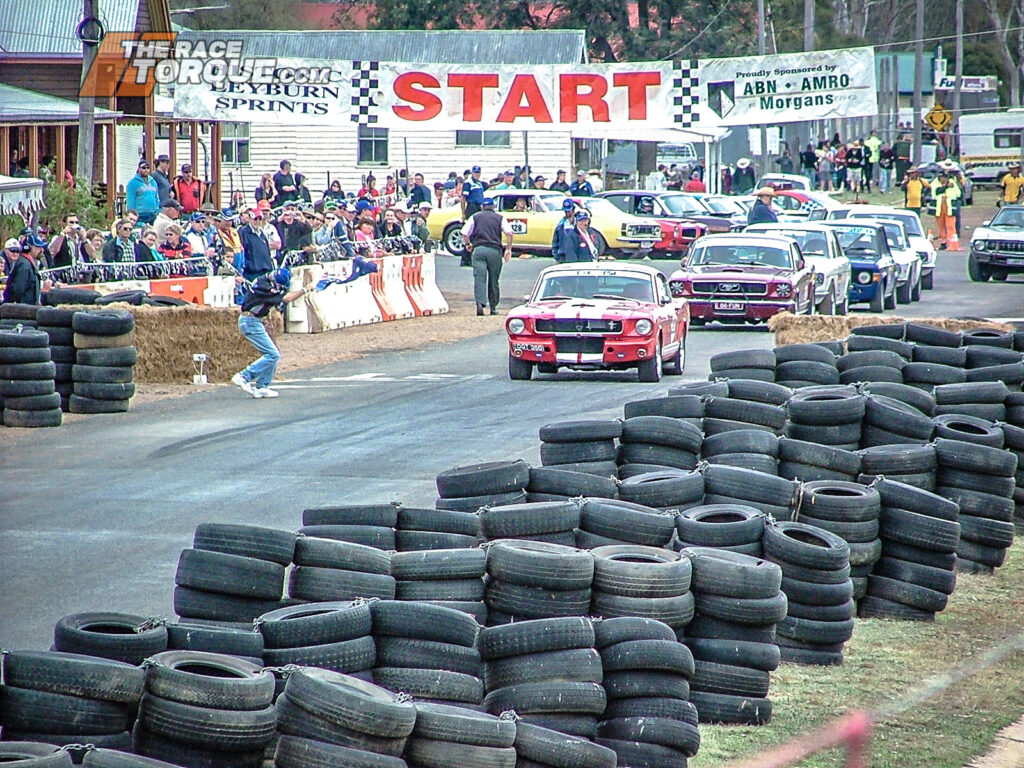
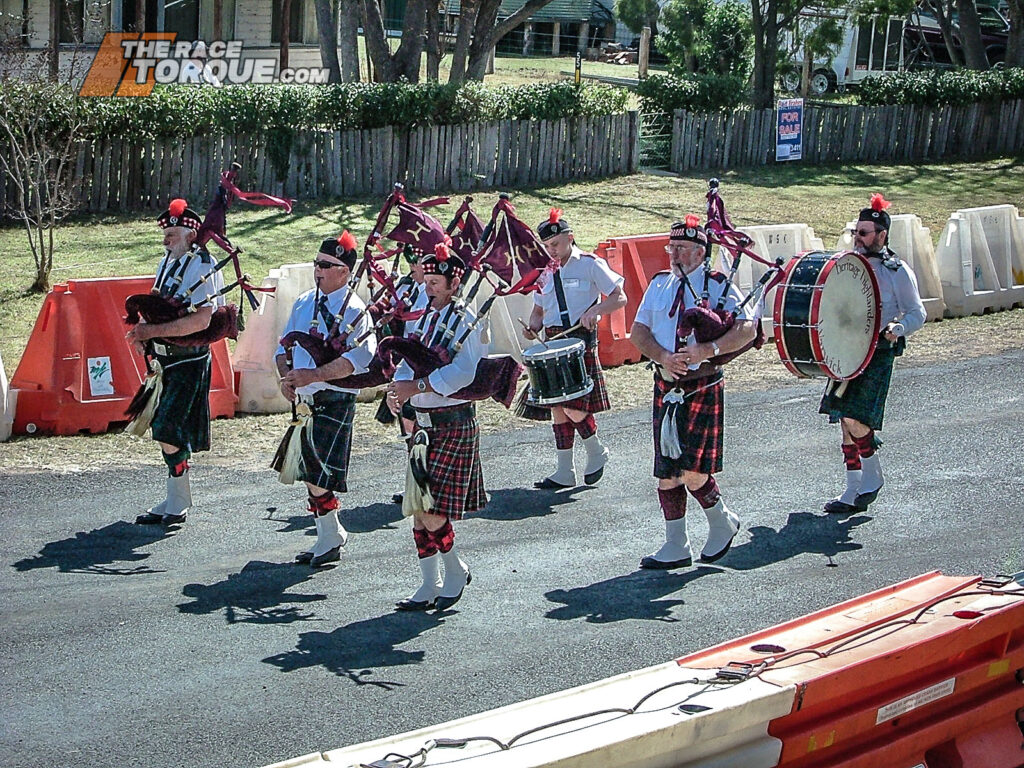
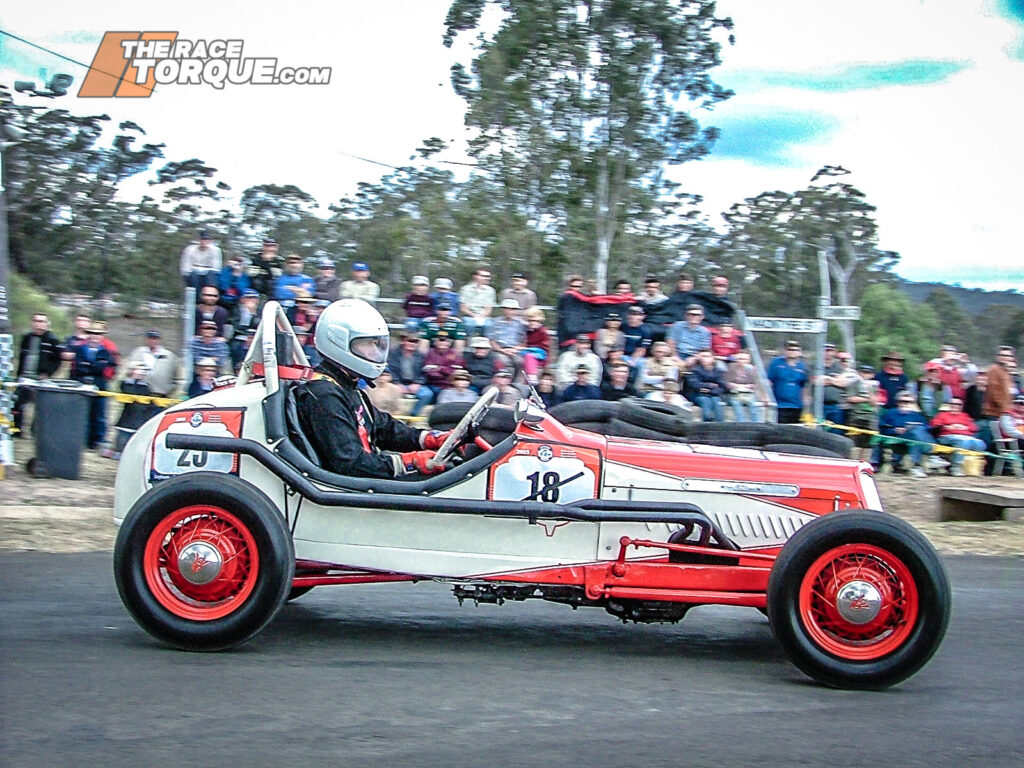
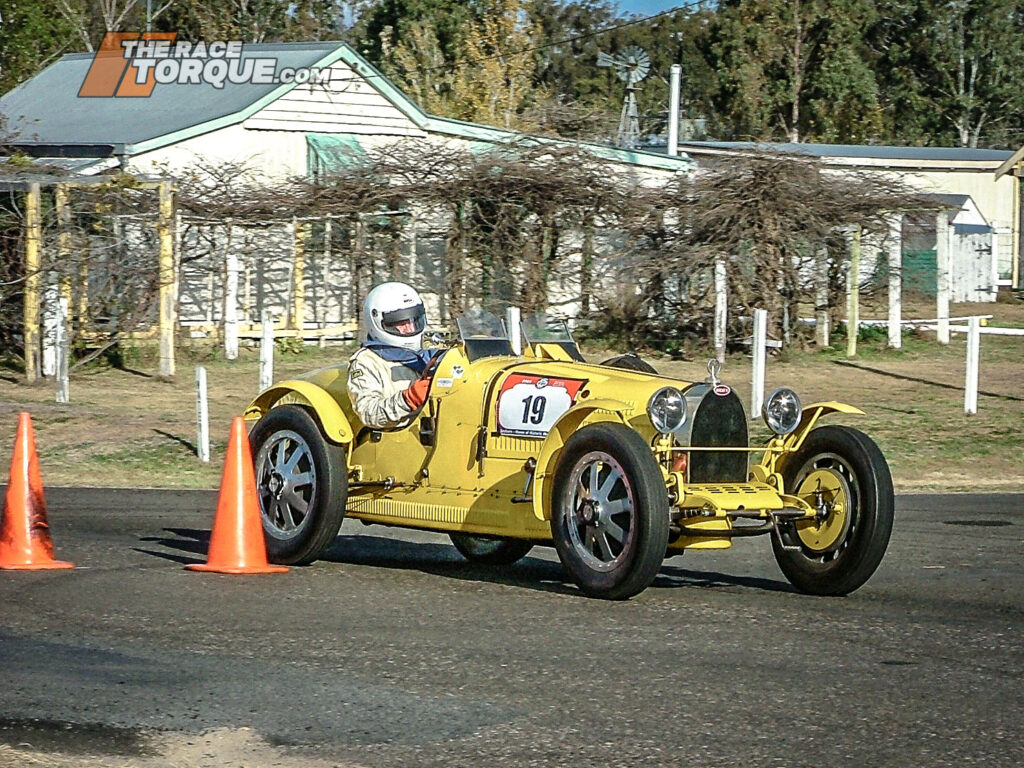
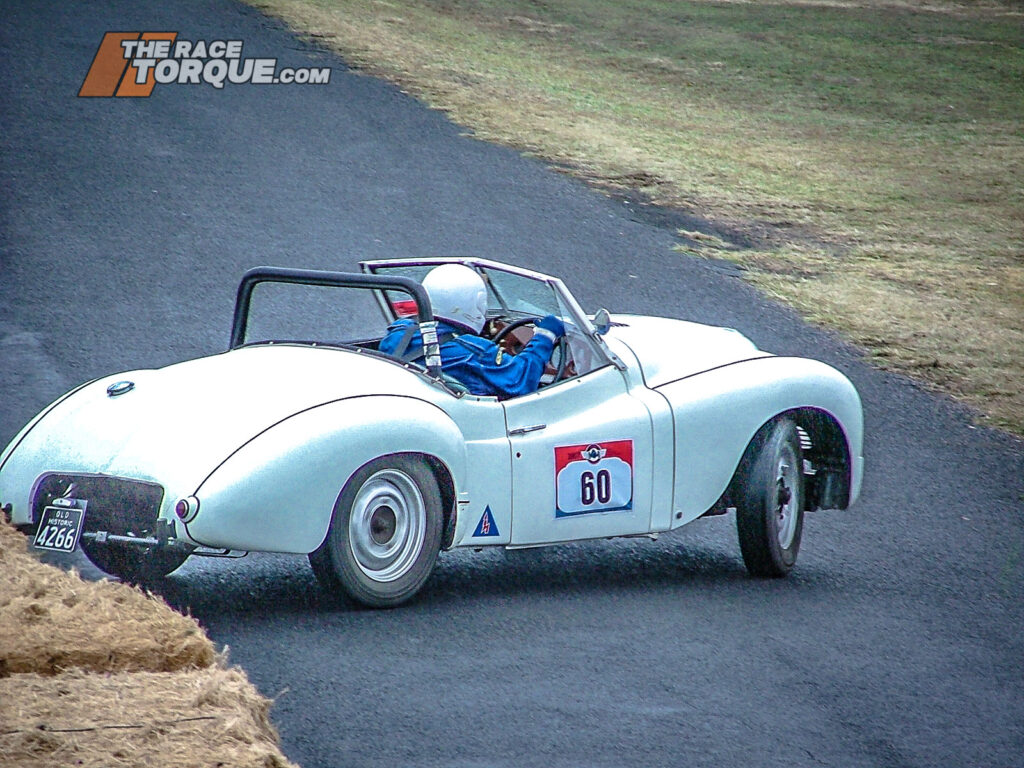
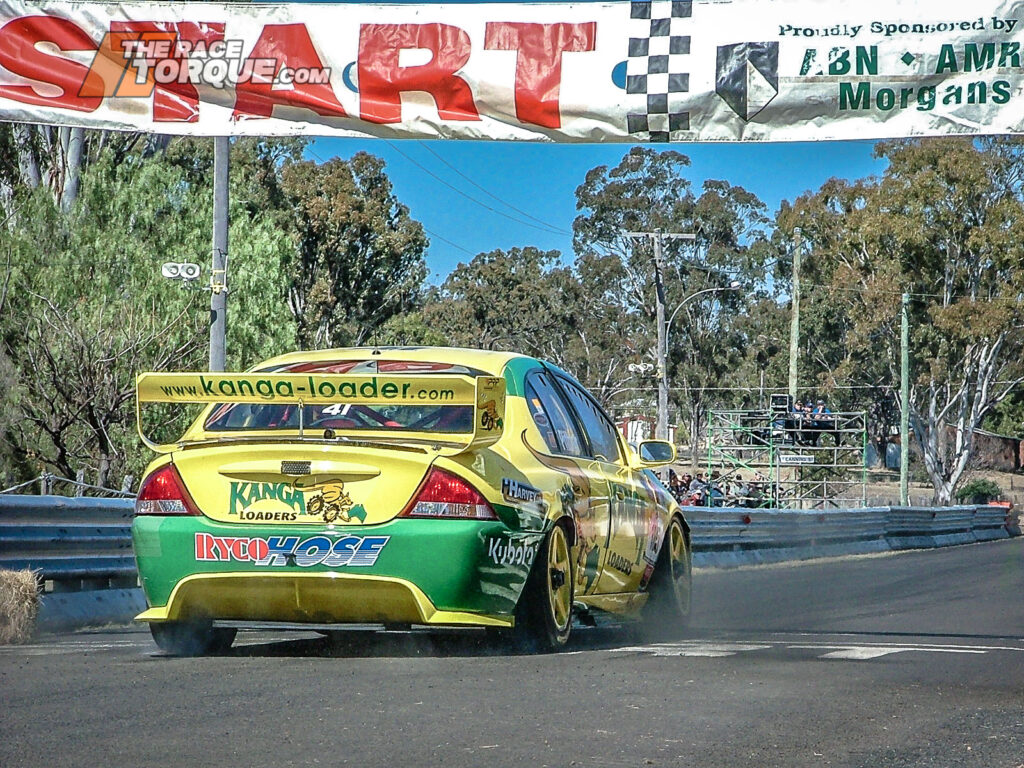
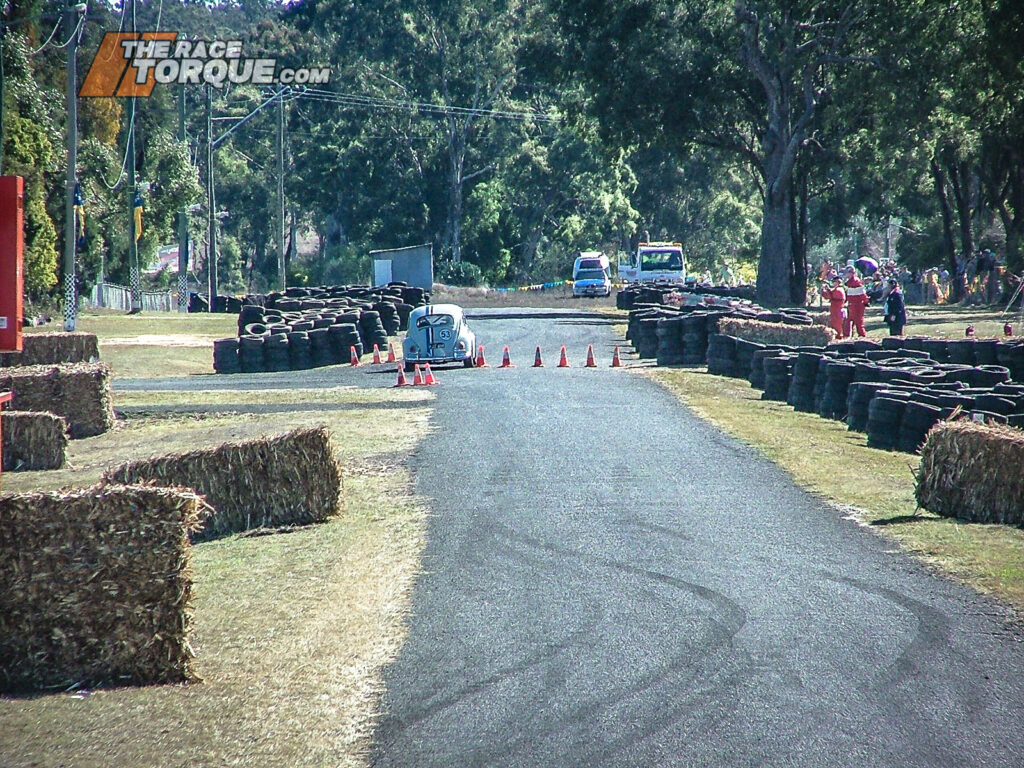
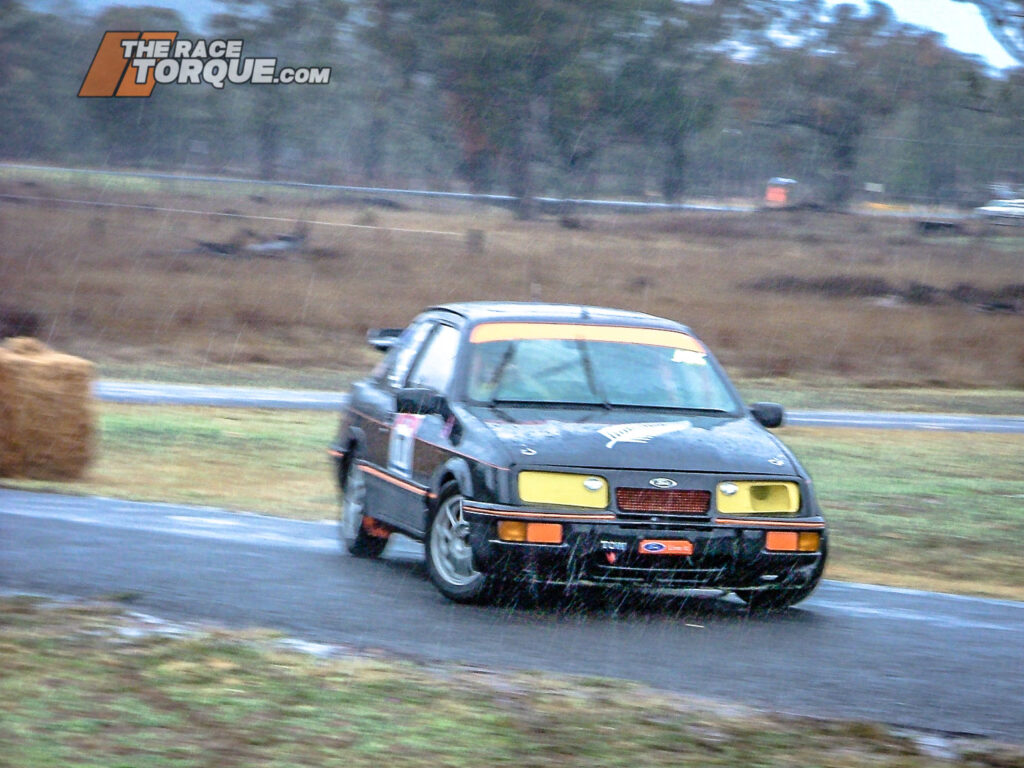
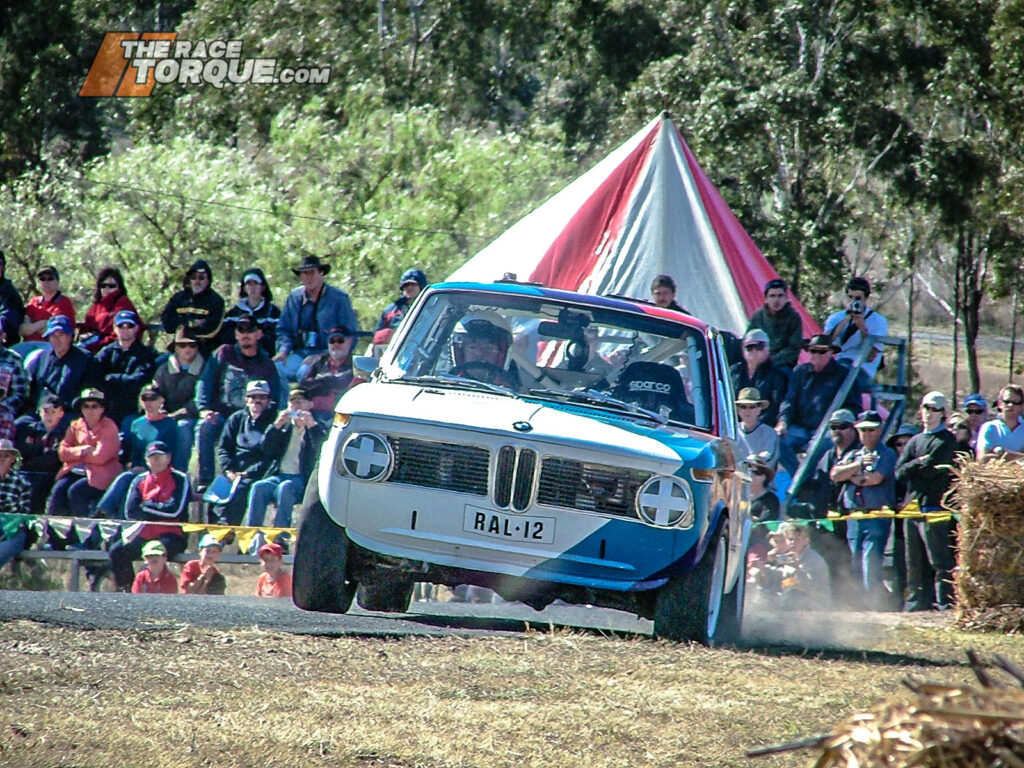
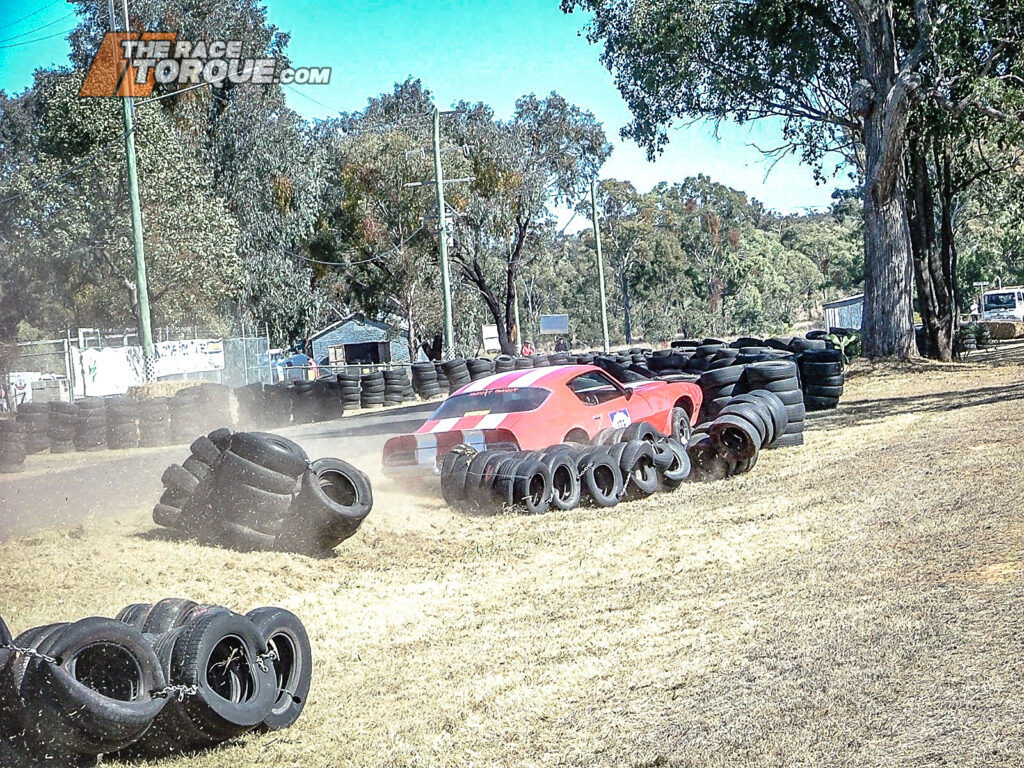
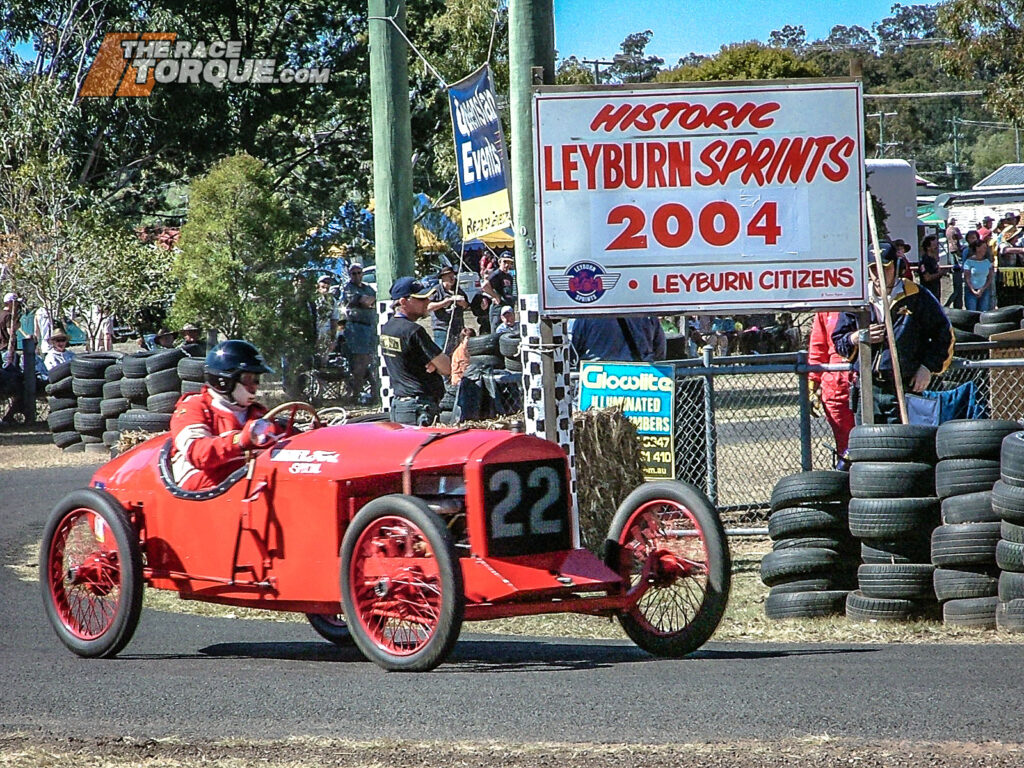
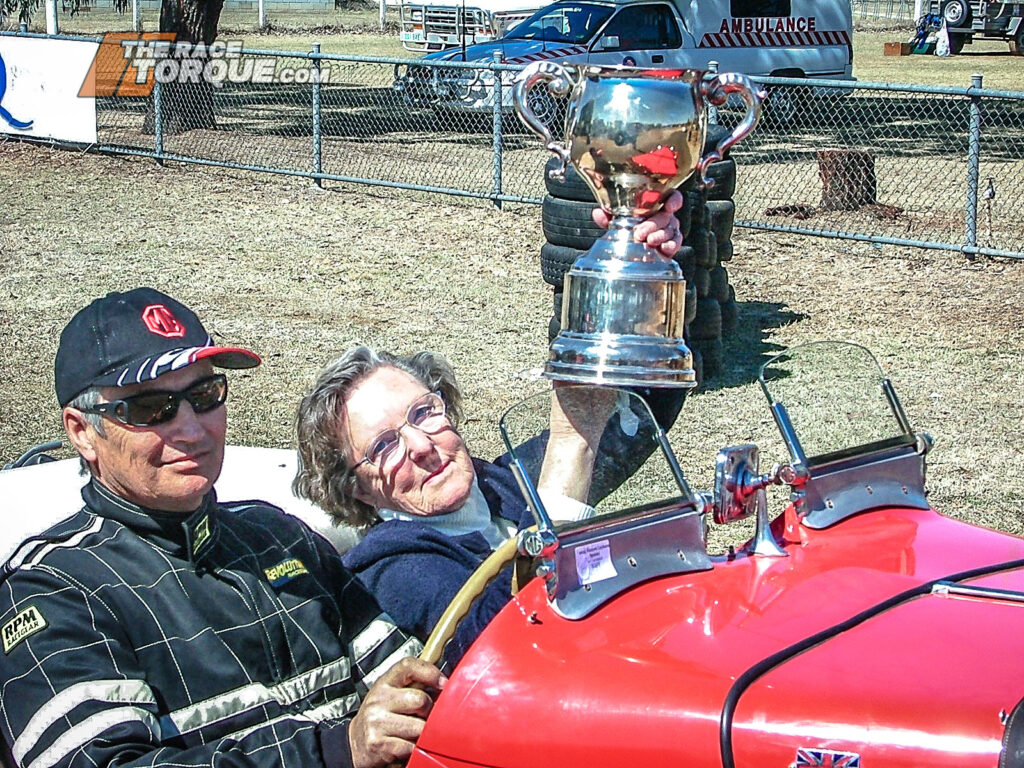
However, come 1996, motorsport put Leyburn, a town of 150 people, back on the map.
With the old runways, which are located 7km out of town, no longer suitable, the Historic Racing Car Club of Queensland, led by Bill Westerman and committee, joined forces with local Ann Collins to create the original iteration of the Leyburn Sprints on the streets of the town.
The original concept was for the event to have a run-up to the 1999 50th anniversary of the AGP, but the festival never faded, with a local group picking up organisational duties after that ’99 event.
The ties to the AGP ran deep, including in 2002 when Rizzo, Crouch and Gordon’s MGTC made an appearance at the event.
The Leyburn Sprints is a major focal point for the region, drawing in a massive crowd, with many camping for the duration, swelling the town’s population temporarily into the thousands.
Originally dedicated to historic machinery, it has recently grown to include more contemporary invited cars and hillclimb specials, with some winners of the Col Furness Memorial Trophy for FTD including Dean Tighe (Chevron F5000) and Wayne Park (Ford GT40), with the list dominated by Ray Vandersee, Warwick Hutchinson and Dean Amos.
The event was the inspiration for other similar meets of the street sprint genre taking off elsewhere nearby, such as Speed on Tweed, Gatton, Pittsworth, Maryborough and more, with temporary sprints and hillclimbs also held at locations such as the Nambour Showgrounds and the Noosa Hillclimb.
Queensland can be thankful for that old runway, the local farmers, and the town once again embracing motorsport.







